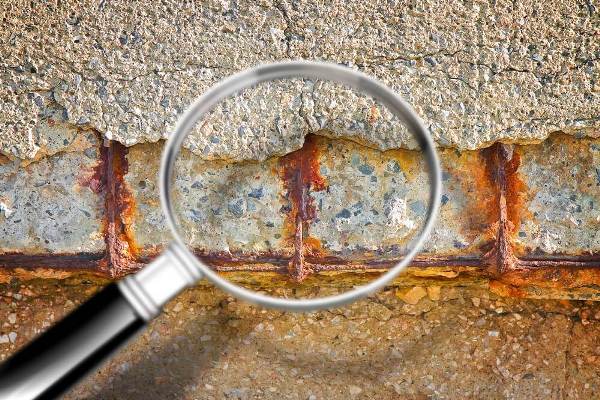Concrete is the most consuming construction material in the world. It is strong in compression but it is weak in tension. To overcome concrete’s natural weakness in tension, steel reinforcement is embedded in concrete, thus allowing the construction of complex reinforced concrete systems such as long cantilevered structures, thinner sections and less supported slabs. Thus, reinforced concrete structures have become the most popular structural material for over a century. The significant consideration of construction standards and policies are the necessity of a structure to survive for several decades. However, deterioration of reinforced concrete structures can begin in as little as 10 years; even if these structures are built conforming to codal provisions. The major reason for this premature degradation of reinforced concrete structures is the corrosion of steel reinforcement and this can be considered as a major concern for durability of reinforced concrete structures.
Why Corrosion in Reinforced Concrete Structures occurs?
The pH of the concrete pore solution ranges between 12.4 and 13.5 making reinforced concrete a highly alkaline composite. This alkaline property of concrete helps to inhibit corrosion of reinforcing steel which is embedded inside the reinforced concrete and makes the steel passive. However, the well-connected open pore structure of the cementitious matrix allows aggressive substances to penetrate into the bulk material, thus initiating steel corrosion under favourable conditions. One of the main factors for the onset of steel corrosion is chloride contamination. Accumulation of the chloride ions at the rebar surface due to the ingress of chlorides can destroy the protective passive film of steel, thus corrosion gets initiated in the steel reinforcement. Chloride contamination in a higher degree drops the alkalinity of the cementitious matrix by hydrolysis of the corrosion products, making it more acidic and this propagates corrosion. The corrosion products of reinforcing steel occupy about 3 to 8 times the original volume of steel reinforcement embedded in cementitious matrix. This increase in volume generates significant expansive forces in the vicinity of steel reinforcement, ultimately causing concrete cracking and spalling. The presence of corrosion reduces the effective steel cross section and declines its bond strength with concrete. Hence, corrosion increases the potential risk of rapid structural failure.
The corrosion-induced structural deterioration can result in significant loss of protection against progressive collapse and must be considered as a fatal. The most recent incident of a fatal consequence of corrosion happened at Champlain Towers South, a 12-story oceanfront condominium in the Miami suburb of Surfside, Florida, USA on June 24, 2021. The incident has confirmed a death toll of 98 individuals. The main contributing factor identified for the long-term degradation of reinforced concrete structural support is the reinforcing steel corrosion.

Along with the structural and fatal impacts, impacts of corrosion can be defined in economic terms also. Steel corrosion in structures causes considerable losses to society due to maintenance and repair needs. A significant percentage of concrete structures are structurally deficient due to corrosion and are subjected to repair and rehabilitation to regain the functional and structural performance. This cost of repair and rehabilitation directly contributes to the cost of corrosion. Additionally, indirect cost which includes loss of productivity, traffic delays etc. is approximated around 10 times that of direct cost of corrosion. According to the NACE report, around 15% of the concrete bridges including both conventional and prestressed bridges built are structurally deficient due to corrosion. The total direct cost of corrosion is estimated as $276 billion in a year. Therefore, the totality of the direct and indirect cost of corrosion exceeds three times world’s GDP.
Most of the newly constructed structures are anticipating corrosion in the near future. Corrosion affects the strength, stiffness and stability of RC structures, and consequently, their safety and serviceability. Together with the structural and fatal consequences, corrosion will also increase the cost associated with it. Therefore, protecting the reinforced concrete structures and extending the service life of structures is an inevitable need. Various protection techniques are in practice to mitigate corrosion of reinforcing steel in the concrete structure such as use of patch repairing, protective coating, impressed current method, and sacrificial anodes. However, limited research is happening on these protection techniques and its effect on corrosion of real time reinforced concrete structures. Therefore, more methodical work is needed to investigate how to safeguard the structures from corrosion.
About Author:
Dhanya B. S., Associate Professor, Department of Civil Engineering, Rajiv Gandhi Institute of Technology, Kottayam, Kerala
Arya E. K. Doctoral Research Scholar, Department of Civil Engineering, Rajiv Gandhi Institute of Technology, Kottayam, Kerala


